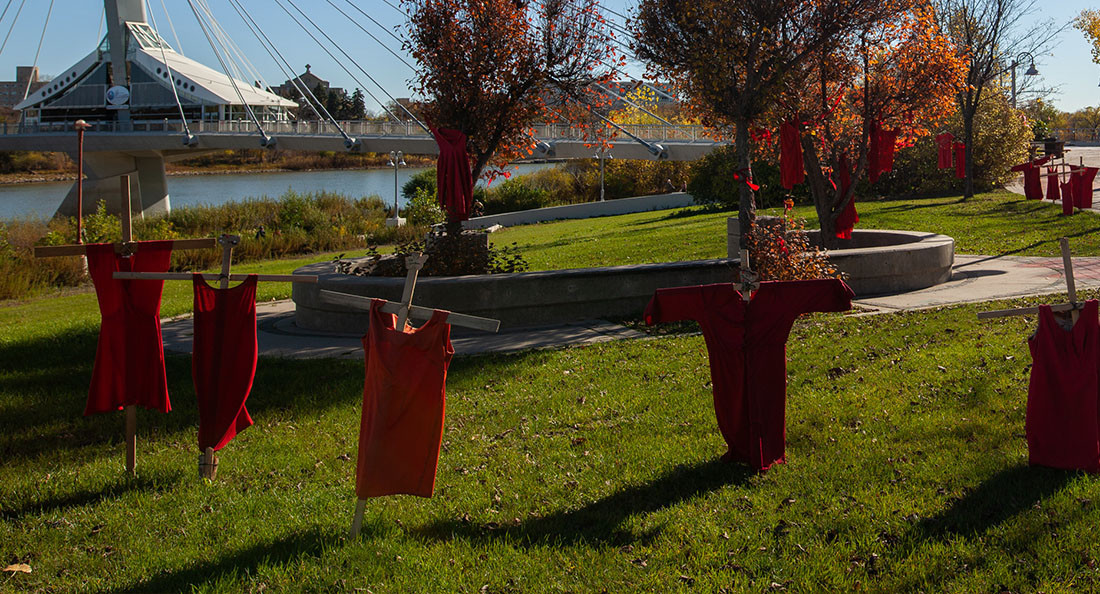Looking beyond the landfill search
MMIWG2S+ and continuing the calls for justice
Warning: this story contains distressing details
After 10 months of protest, the search for two Long Plain First Nation women is moving forward.
On Oct. 4, the federal government announced $740,000 in funding to Long Plain First Nation to examine the preliminary steps of searching the Prairie Green landfill for the remains of Morgan Harris and Marcedes Myran.
“This is a really good first step to being able to bring these women home,” Assembly of Manitoba Chiefs Grand Chief Cathy Merrick says.
The Winnipeg Police Service (WPS) suspect their remains were discarded in the Prairie Green landfill in May 2022, about 18 km northwest of the city.
Jeremy Skibicki has been charged with four counts of first-degree murder, and his six-week trial is set to begin on April 20, according to Manitoba Justice.
The police also found partial remains of Rebecca Contois, who was a member of O-Chi-Chak-Ko-Sipi First Nation, also known as Crane River, at the Brady Road landfill in Winnipeg.
The police have evidence of a fourth unidentified victim known as Mashkode Bizhiki’ikwe or Buffalo Woman, who has yet to be found.
Long Plain First Nation Grand Chief Kyra Wilson is collaborating with experts, the owners and operators of the Prairie Green landfill and provincial and municipal leadership, “ensuring that the respect and dignity of our lost sisters are at the forefront of these humane search and recovery efforts.”
They have 90 days to put together the details of a search, including how they will mitigate the health and safety risks outlined in the final report of the feasibility study, which was released in June.
Merrick says she is disappointed that searching the landfill for First Nations women was politicized in the province. She hopes the families are able to find closure and that officials can identify Buffalo Woman, so she can have her birth name back and be laid to rest.
Demanding the provincial and federal governments to search the landfill while raising awareness for missing and murdered Indigenous women, girls, Two Spirit and gender-diverse people (MMIWG2S+) has been tiring, she says.
“I strongly believe the Creator places us in these positions to be able to do that,” Merrick says.
“But there’s always those uplifting moments that carry you to the next ... all that support that came from across Turtle Island was from the heart.”
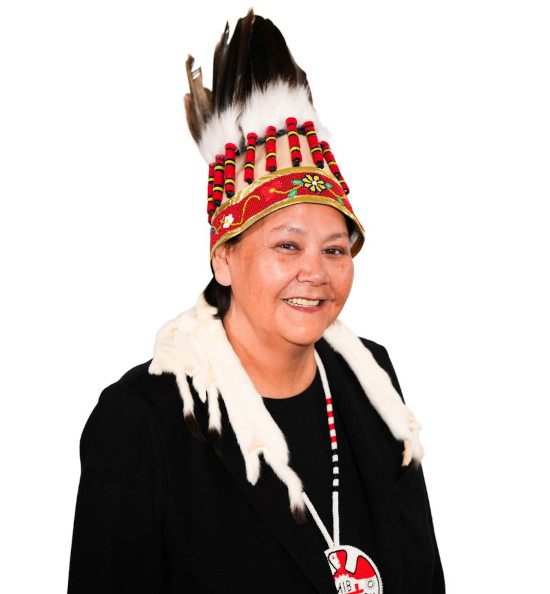
Supplied photo - Cathy Merrick, Grand Chief of the Association of Manitoba Chiefs
Healing ceremonies and the answers that follow
One month ago, Merrick attended an annual Indigenous ceremony on a farm in Libau, Manitoba, about 58 kilometres northeast of Winnipeg, serving as a Cree interpreter. To her surprise, the Knowledge Keeper leading the ceremony called to Merrick, saying a grandmother spirit wanted to speak with her.
“She started talking about the search at the landfill,” Merrick says. “‘It’s going to happen,’ she says, ‘but it’s going to be a hard process.’”
Merrick’s happiness and hope for searching the Prairie Green landfill started in ceremony. She says it felt good to hear those words as she hugged one of Harris’s family members who was there.
“It’s very bittersweet,” Merrick says.
The victims’ families and friends have to carry the heaviness of their grief and trauma while advocating for governments to do the right thing by agreeing to a search, she says.
Breaking down the feasibility-study report
On Dec. 5, 2022, the WPS told the family members of Harris and Myran they believed their remains were likely located at the Prairie Green landfill and that a search would not take place.
Family members, including members from AMC, Long Plain First Nation and other organizations and committees, requested federal funding for a feasibility study in February.
Shortly after the release of the final report of the study, former premier Heather Stefanson said in a news release in July that the Province would not commit to a search due to risking workers’ health and safety in addition to the overall costs of the operation without guaranteed results.
The feasibility-study findings report that a search could take between one to three years and cost between $84 million and $184 million.
These costs include estimates for developing a conveyor-belt system to sort through 67,200 tonnes of garbage, heavy equipment and the operating and labour costs of hauling and excavating materials from the landfill cells 13 and 15, staff buildings and trailers and personal protective equipment (PPE).
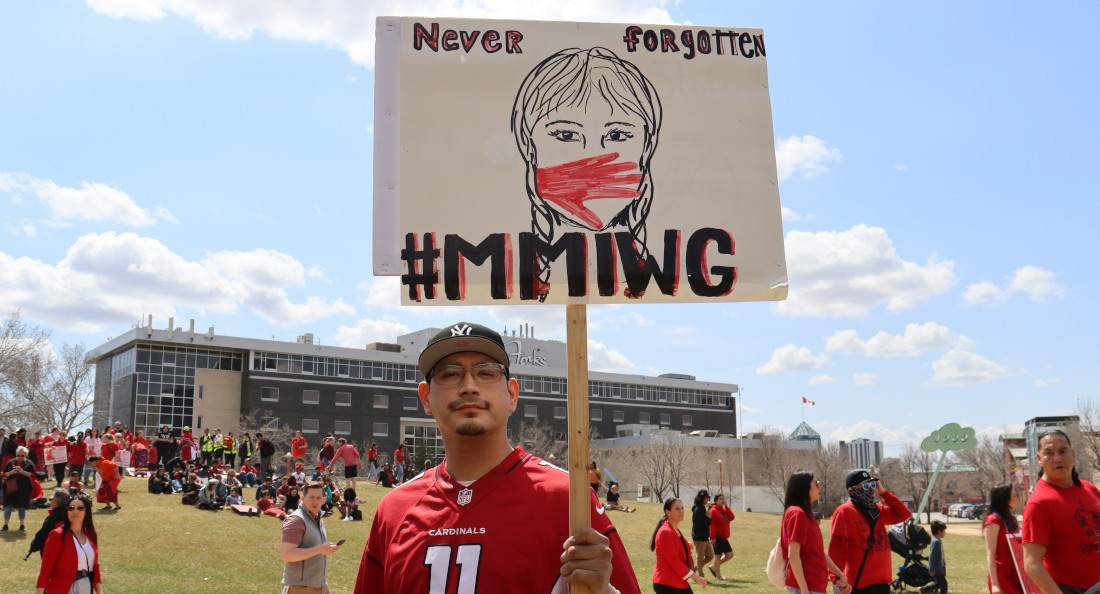
Photo by Tessa Adamski - Demonstrators gather at The Forks on Red Dress Day on May 5, 2023.
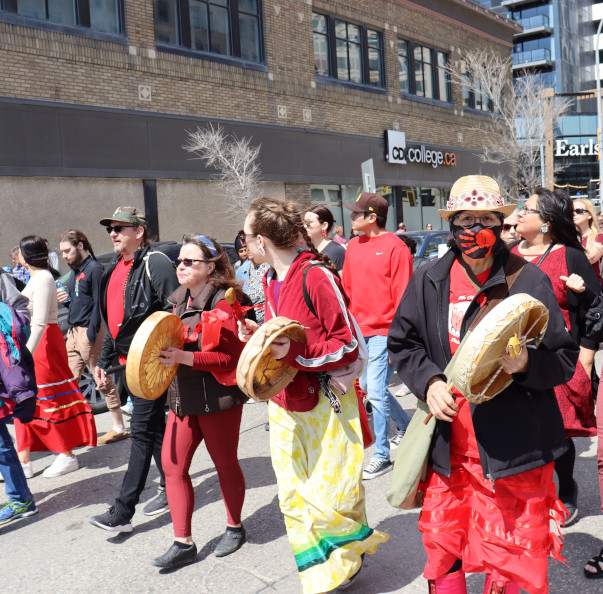
Photo by Tessa Adamski - Demonstrators march from Portage and Main to The Forks on Red Dress Day, showing support for missing and murdered Indigenous women and girls, on May 5, 2023.
The feasibility study provided recommendations to protect workers’ health and safety from toxic chemicals like methane, carbon dioxide, hydrogen sulfide and asbestos.
However, all workers would be required to complete specific health and safety training and wear PPE like hazmat suits, disposable microporous coveralls, full-face respirators and chemical-resistant gloves. The report also recommends having paramedics on standby.
The change in leadership following the provincial election on Oct. 3 has given the victims’ families hope in recovering their loved ones.
Manitoba Premier Wab Kinew is committed to helping initiate a search.
“It’s important for us to deliver on this and, again, it’s important for us to try,” Kinew said during a news conference. “This will be one of those items that we want to tackle in the very early days of our administration.”
The Minister of Crown-Indigenous Relations Gary Anandasangaree said in a statement that he “will continue to work in partnership with Indigenous leaders, families, survivors and communities to support healing and closure.”
Merrick says having a First Nations premier is a new chapter for First Nations people, and she will hold him accountable to his word.
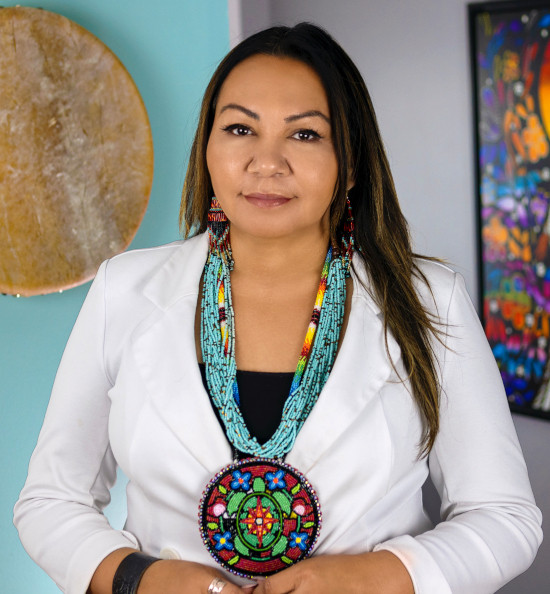
Supplied photp - While working as a journalist in 2012, Sheila North helped to create the MMIWG hashtag.
Disproportionate violence against Indigenous women, girls, Two-Spirit and gender-diverse people
Indigenous people make up 18 per cent of the population in Manitoba, where 58 per cent identify as First Nations, 40 per cent are Métis and 0.3 per cent are Inuit, according to the latest census data.
Between 2001 and 2014, the rate of murdered Indigenous women in Manitoba was 7.16 per 100,000, which was higher than the national average of 4.82 per 100,000.
Last year, Winnipeg reported a record number of 51 homicides, and at least 10 of those killed were Indigenous women, according to the WPS.
After witnessing the impact of Idle No More, a movement dedicated to protecting the environment and Indigenous rights, Sheila North was inspired to take action on the rights of Indigenous women and girls.
While working as a journalist in 2012, she helped to create the MMIWG hashtag, which has since expanded to include Two-Spirit and gender-diverse people. As she met families with missing or murdered female relatives, she realized some of their stories were similar to her own.
“It kind of clicked around that time that I was a survivor of this issue,” North says.
She moved to Winnipeg from Bunibonibee Cree Nation at 15 years old and lived with a house parent in the North End while she went to high school.
North says she didn’t know what to expect as a shy teenager living in the city.
“I must have stuck out like a sore thumb to predators and, unfortunately, they targeted people like me at the time,” she says.
North described an experience one evening where a man threatened to harm her if she didn’t get in his car while she waited outside the Winnipeg Roller Rink on Portage Avenue and Langside Street.
After driving her home, the man attempted to force himself on her before she unbuckled her seatbelt and ran.
“I think I stayed in my room after that for a couple of days because I was so scared of it,” she says.
Federal and provincial power structures in Canada have long failed Indigenous communities. The impact of residential schools, the Sixties Scoop and other ongoing forms of colonialism have created significant disparities within the healthcare, education and the justice systems. These inequalities place Indigenous women at an increased risk of violence while providing little consequences for those who harm them.
Tina Fontaine, a 15-year-old girl from Sagkeeng First Nation was murdered on Aug. 17, 2014. Her body was found wrapped in a duvet cover weighed down by rocks in Winnipeg’s Red River.
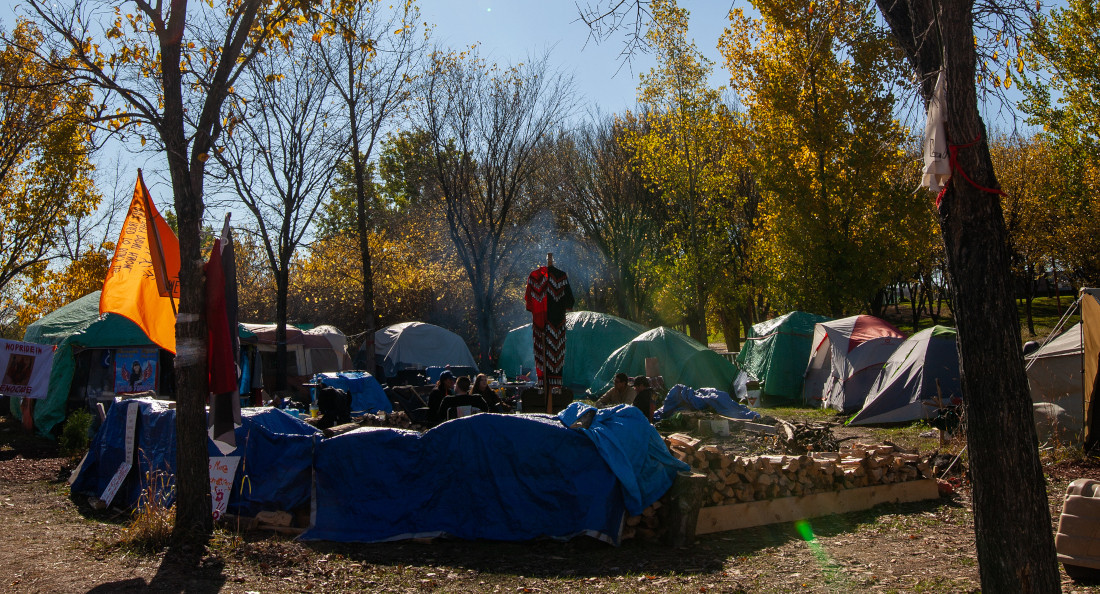
Camp Marcedes is located near the Canadian Museum for Human Rights.
The accused perpetrator was acquitted by a jury in 2015, which raised awareness across Canada to protect women and girls and create a database for those who are missing or murdered.
Indigenous leaders criticized the verdict along with the child-welfare system and the lack of counselling services and support for Fontaine in the years leading up to her death.
More than 2,380 people, including families and survivors of violence shared their experiences, helping create the National Inquiry into Missing and Murdered Indigenous Women and Girls.
The final report was released in 2019 and establishes 231 calls to justice for all levels of government, institutions and individuals. It highlights the inequities MMIWG2S+ face and the Indigenous-led responses needed to address these injustices and systemic issues.
Within four years, Canada has completed two of the 231 calls to justice, according to CBC’s analysis – a number advocates say is barely scratching the surface of the work needing to be done.
North says one of the common themes she sees is a lack of access to resources, stable housing and funding helping vulnerable women, girls, Two-Spirit and gender-diverse people.
“Their vulnerability becomes something for predators to use to victimize people,” she says. “If we can start to lessen the need for reliance on everything else, and empower people to sustain themselves, I think the less victims we’ll see going forward.”
All of these systems are connected and tie back to Canada’s negligence of the treaty obligations to First Nations people, Merrick says. This lack of support and protection creates space for predators like Jeremy Skibicki to prey on vulnerable people, she says.
“There’s a lot of work that needs to be done just beyond the landfill,” Merrick says. “We need action on those other items, too, if we really want to make a change and make things better.”
Published in Volume 78, Number 06 of The Uniter (October 19, 2023)

